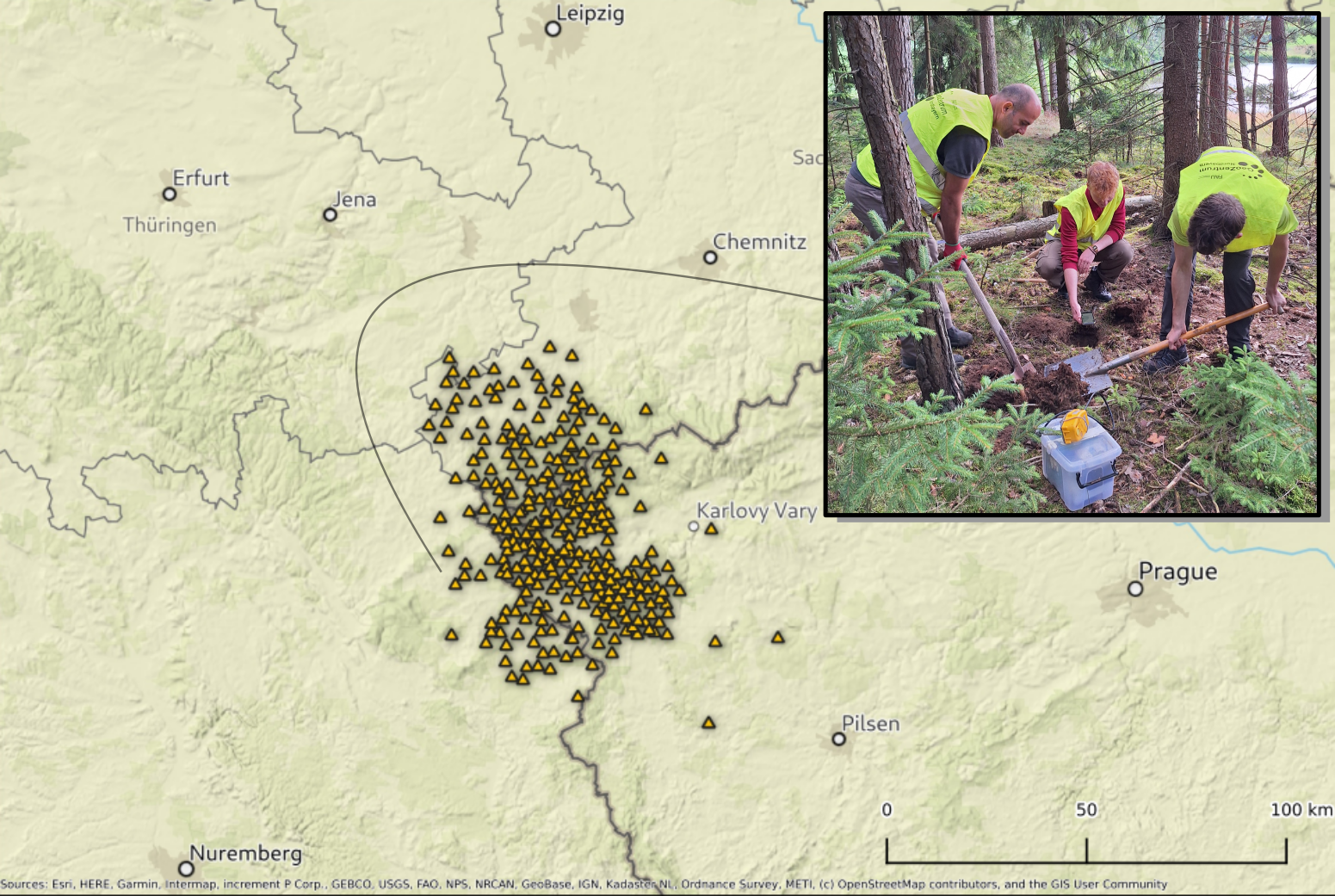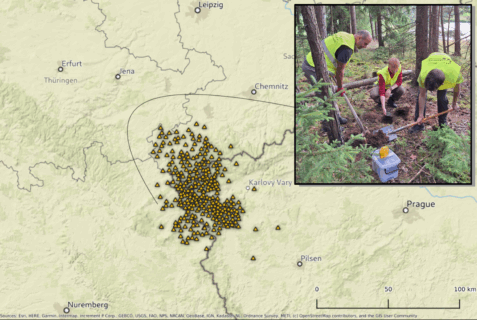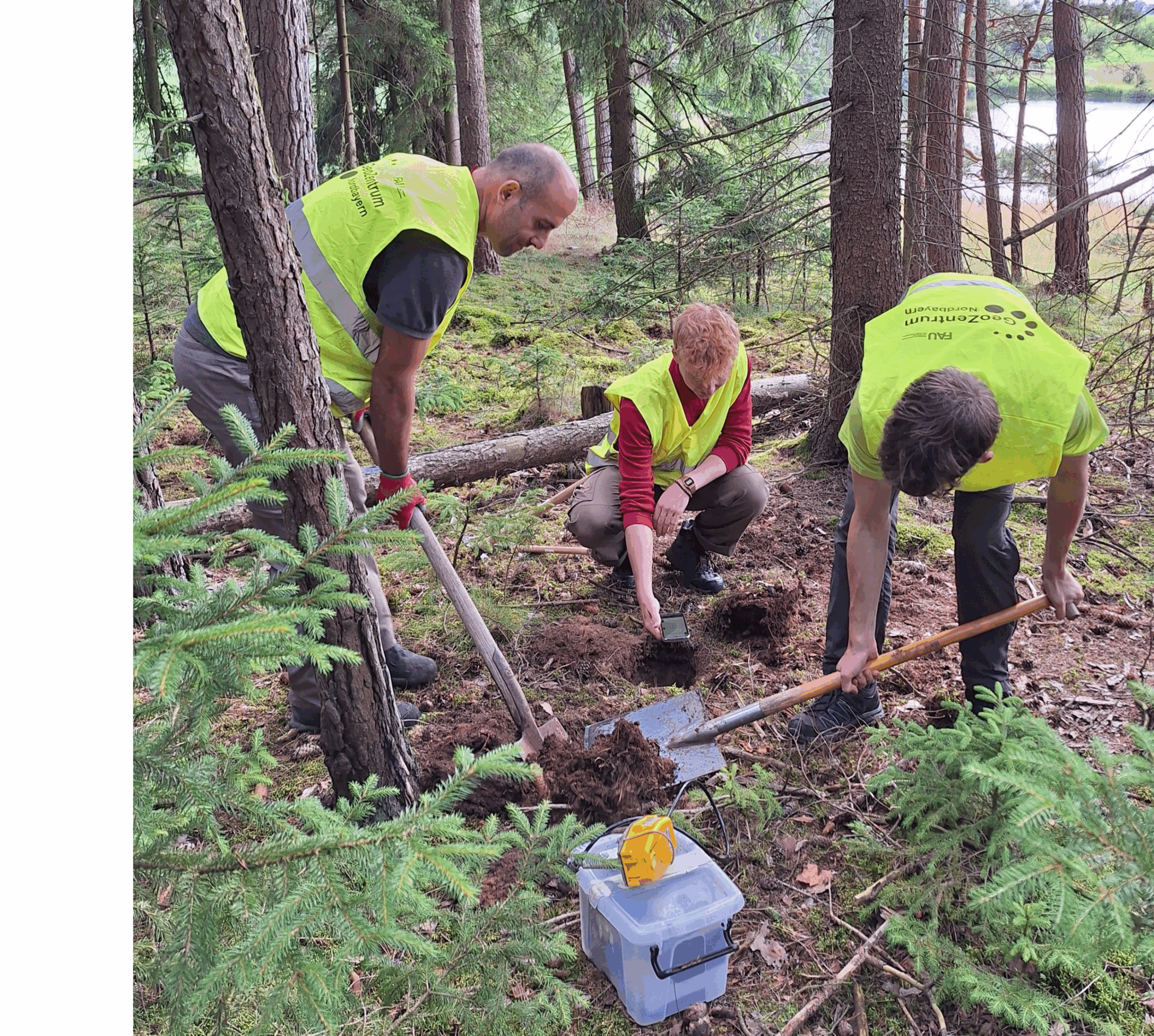Eger Large Seismic Experiment: ELISE



During 1st to 3rd of August GeoZentrum Nordbayern contributed to the deployment of seismic stations within the ‚Eger Large Seismic Experiment (ELISE)‘.
The ELISE international research project will explore the deep underground of Vogtland and northwestern Bohemia, a region along the German-Czech border known for its recurring earthquake swarms. Earthquake swarms are clusters of many small to moderate earthquakes occurring over days to months without a single large mainshock. In the Vogtland and northwestern Bohemia, the occurrence of such swarms is linked to fluid movements in the subsurface that may reflect magmatic activity in the Earth’s lower crust and upper mantle. Yet, the exact cause of the earthquake swarms remains unclear.
To study the earthquake swarms and associated phenomena, the GFZ Helmholtz Centre for Geosciences, the Academy of Sciences in Prague, Universities in Potsdam, Leipzig, Freiberg, Jena, Munich, Erlangen, and Münster, and the Saxon Geological Service are deploying nearly 300 temporary seismic stations across a 100-by-100-kilometer area. This data will provide a more accurate picture of the Earth’s crust.
More information & further contact persons
Project manager: Prof. Dr. Torsten Dahm (torsten.dahm@gfz.de)
Scientific & Technical Coordinators: Dr. Pinar Büyükakpinar (pinar@gfz.de) & Dr. Marius Isken (marius.isken@gfz.de)
At GeoZentrum Nordbayern: StrucTec@GZN
You can access the electronic project mailbox at: elise-info@gfz.de
